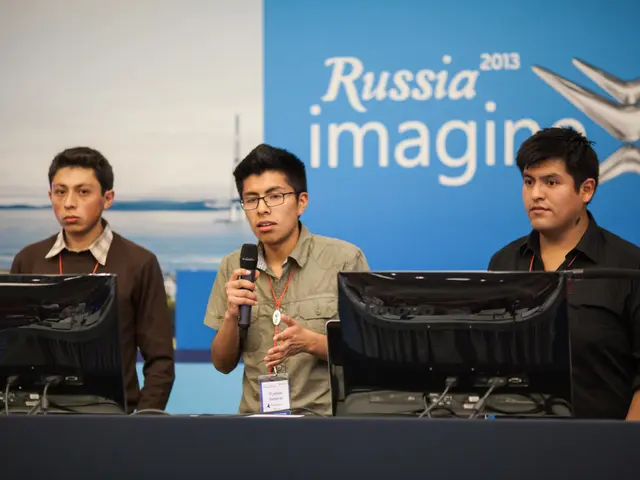Unpredictable Chinese Policies Under Trump's Administration
The U.S.-China trade relationship in August 2025 is marked by a complex interplay of high tariffs, periodic extensions, and sensitive technology negotiations. The current state of affairs is one of managed tension, with ongoing negotiations but no broad rollback of tariffs or normalization yet.
The U.S., under a tariff truce extended by the Trump administration, maintains an aggregate 55% tariff on most Chinese imports. This consists of a 10% baseline tariff, 20% "fentanyl"-related tariffs, and 25% Section 301 tariffs from earlier campaigns. China, in response, faces a 10% tariff on U.S. goods. Reciprocal tariff rates have been discussed, with some temporary reductions, but most tariffs remain high.
A key development in this relationship involves the trade of rare earth magnets, essential for chip manufacturing. After countermeasures were imposed, these trades have resumed as part of the ongoing dialogue and agreements.
The White House's China policy remains a source of concern for the U.S.'s partners in Europe, Asia, and elsewhere. Questions linger about whether the administration has a consistent strategy, with decisions seemingly based on the president's moods, mercantilist interests, and meetings with CEOs, rather than a settled strategy.
China, holding a virtual monopoly on rare earths, plays this card against the U.S., which counters with the advantage of artificial intelligence chips, a technology Beijing does not yet fully possess.
The uncertainty in the U.S. China policy plays into Beijing's hands, causing confusion among European and Asian actors, both commercially and in the field of security. Journalist Robert Armstrong coined the expression "TACO" (Trump Always Chickens Out) to describe President Donald Trump's flexibility on trade tariffs, which may also apply to his policy towards China.
A significant recent development is the agreement reached between President Trump and the CEO of Nvidia, allowing the export of the H20 model chips to China in exchange for paying 15% of the profits to the U.S. Treasury. This agreement signals a change in Washington's line on the sale of semiconductors to China, as such sales had been banned since April.
Both China and the United States are exerting reciprocal pressure, with China using rare earths as leverage and the United States using artificial intelligence chips. This dynamic raises concerns among hardliners in Washington about potential concessions on more advanced chips that could risk U.S. national security.
The administrations reportedly plan further talks before the tariff truce expires on November 10, 2025, with both sides expressing cautious optimism about maintaining current terms. High-level meetings between President Trump and Chinese leader Xi Jinping remain possible but uncertain.
In summary, the U.S.-China trade relationship in August 2025 is governed by a complex mixture of high tariffs maintained under periodic extensions, some tariff easing on specific items, and sensitive technology trade negotiation (notably around rare earth magnets). The overall status is one of managed tension with ongoing negotiations but no broad rollback of tariffs or normalization yet. The "TACO theory" does not appear to be part of the current publicly known discourse or policy framework in this area.
Read also:
- Tesla is reportedly staying away from the solid-state battery trend, as suggested by indications from CATL and Panasonic.
- Review of the 2025 Lamborghini Revuelto: Blazing Beasts on Wheels
- California links 100,000 home storage batteries through its Virtual Power Plant program.
- Financial regulatory body examines potential instability of Decentralized Finance (DeFi) and cryptocurrencies as they approach a significant growth milestone, known as "critical mass".






